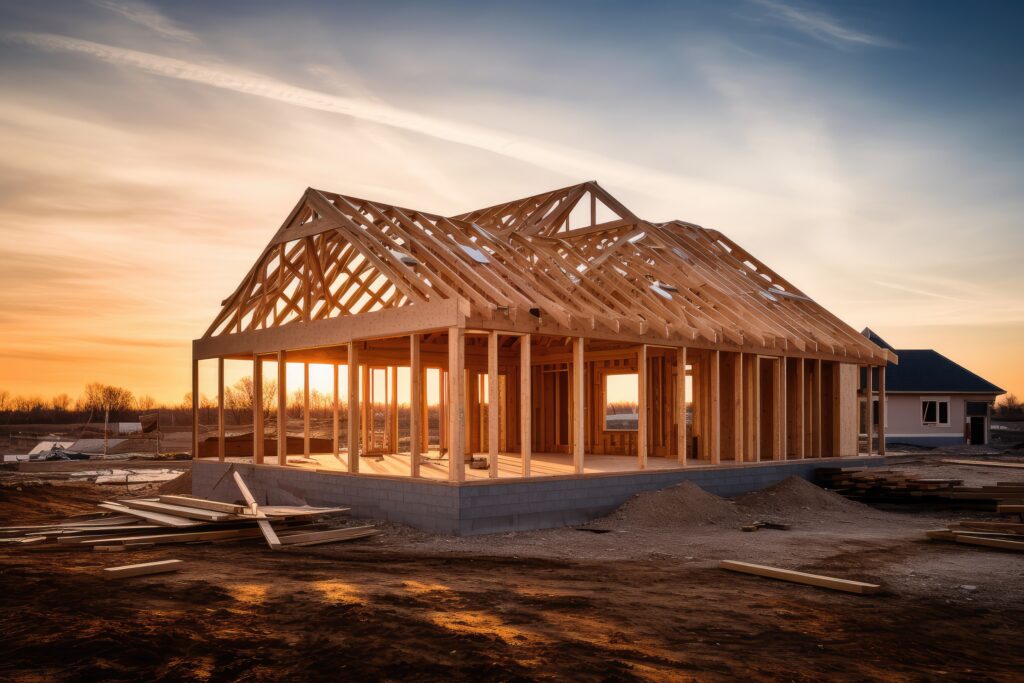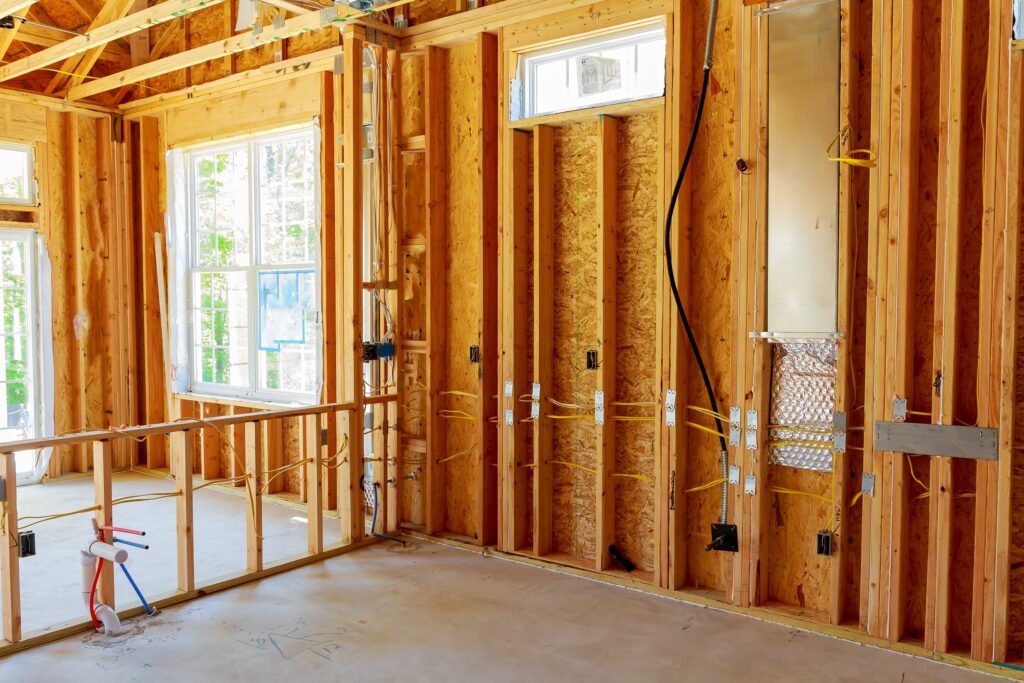New home construction has undergone a profound transformation, evolving from a labor-intensive process with limited options into a dynamic and sophisticated industry, and we at DeGeorge Development, LLC have been staying up to date with all the new trends. Fueled by innovation, technology, and a growing commitment to sustainability, the construction of new homes has become a multifaceted journey. In this comprehensive exploration, we will delve deeper into the various stages, key players, emerging trends, and intricate processes that define modern new home construction.
NJ New Home Construction
Pre-Construction Planning:
This initial stage is akin to the blueprint of a masterpiece. It involves meticulous planning, which includes:
Site Selection: Homeowners carefully choose the location for their new abode, considering factors like proximity to schools, work, and amenities.
Budgeting: Creating a comprehensive budget to ensure financial feasibility throughout the project.
Permit Acquisition: Navigating the regulatory landscape to secure the necessary permits and approvals.
Architectural Collaboration: Working closely with architects and designers to translate the homeowner’s vision into detailed architectural blueprints.

We Specialize in Building New Homes in New Jersey!
Example: Imagine a couple in New Jersey planning their dream coastal home. They select a beautiful oceanfront site in a picturesque town, set a budget, obtain the required permits, and collaborate with an architect to design a beachfront paradise.
Site Preparation:
Once the ideal location is secured, the next step is preparing the site for construction. This stage involves:
Clearing: Removing trees, vegetation, and any obstacles to make way for the construction process.
Grading: Leveling the land to create a stable foundation.
Excavation: Digging trenches or holes for the foundation and utilities.
Foundation Construction:
The foundation is the bedrock of any home, providing stability and support. Different foundation types are chosen based on specific needs and conditions:
Slab Foundation: Ideal for areas with stable soil conditions and minimal frost.
Crawl Space Foundation: Common in regions with moderate climates and minimal risk of flooding.
Basement Foundation: Popular in areas with cold winters and abundant groundwater.
Example: In a suburban neighborhood in New Jersey, a basement foundation is poured for a family home, offering additional living space and protection from harsh winters.


We can design and build your dream home for you!


Windows and doors get measured and installed at the right time
Framing and Structural Work:
With a solid foundation in place, the structural framework of the house takes shape. This stage includes:
Wall Construction: Erecting exterior and interior walls with precision to ensure stability.
Floor Installation: Creating sturdy and level floors that form the basis for the living spaces.
Roofing: Installing a durable roof that shields the home from the elements.
Exterior Work:
After the structural framework is completed, the focus shifts to the home’s exterior, which includes:
Window and Door Installation: Choosing energy-efficient windows and stylish doors that enhance both aesthetics and functionality.
Roofing Completion: Adding shingles, tiles, or other roofing materials that provide protection and character.
Siding Installation: Applying siding materials that not only enhance the home’s curb appeal but also protect it from the elements.
Interior Work:
The interior transformation begins, making the house functional and comfortable:
Electrical and Plumbing Installations: Wiring the home for electricity and installing plumbing systems for water supply and drainage.
Insulation: Adding insulation materials to regulate temperature and save energy.
Drywall, Flooring, Cabinetry, and Fixtures: Creating inviting and functional living spaces with attention to detail.
Finishing Touches:
This phase adds the final aesthetic touches that turn a house into a home:
Painting: Applying colors and finishes that reflect the homeowner’s style.
Trim Work: Installing decorative elements like crown molding and baseboards.
Countertops and Lighting Fixtures: Selecting materials and fixtures that add both beauty and functionality.
Final Inspections and Quality Control:
Rigorous inspections ensure compliance with building codes and quality standards. Any necessary adjustments or corrections are executed, guaranteeing the home’s safety and integrity.
Closing and Occupancy:
Once the home passes inspections and receives the necessary approvals, the homeowner finalizes the deal with the builder, obtaining the keys and moving into their new home.
All Hands-On Deck! New Home Construction Key Players
Homeowners:
They are the driving force behind new home construction, providing the vision, budget, and specifications for their dream home.
Example: A young couple in New Jersey envisions a sustainable, energy-efficient home that aligns with their eco-conscious values and lifestyle.
Architects and Designers:
Collaborating closely with homeowners, these professionals design the layout and aesthetics while adhering to building codes and regulations.
Example: An architect in New Jersey works with a family to create a modern, open-concept home that maximizes natural light and energy efficiency.


The finishing touches are whatever the client desires
Builders and Contractors:
These experts are responsible for executing the construction process, overseeing every aspect from site preparation to final touches.
Subcontractors:
Specialized professionals like electricians, plumbers, and HVAC technicians handle specific construction aspects.
Inspectors:
Building inspectors ensure that the construction process complies with local building codes and regulations, guaranteeing safety and quality.
Suppliers and Manufacturers:
These providers offer construction materials, fixtures, appliances, and other essential components.
Real Estate Agents and Brokers:
They assist homeowners in finding suitable land or existing properties for new home construction and navigate the purchase process.
Emerging Trends in New Home Construction


New construction homes are energy-efficient
Sustainability and Energy Efficiency:
New homes increasingly incorporate sustainable features to address environmental concerns.
Solar Panels: Homes in sunny California often feature solar panels on their roofs to harness renewable energy.
Energy-Efficient HVAC Systems: In Texas, homes are equipped with energy-efficient heating and cooling systems to combat extreme temperatures.
Recycled Building Materials: Builders in Oregon source recycled and reclaimed materials to reduce environmental impact.
Smart Home Technology:
The integration of smart home systems allows homeowners to control lighting, heating, security, and entertainment remotely, enhancing convenience and energy savings.
Open-Concept Living:
Modern homeowners favor open floor plans that create fluidity between living spaces, making homes feel more spacious and conducive to social interaction.
Multigenerational Living:
The concept of multigenerational homes, designed to accommodate multiple generations under one roof, is gaining popularity as families seek to share expenses and provide mutual support.
Example: In a diverse community in New Jersey, homes are designed with separate living spaces for grandparents, parents, and children, fostering intergenerational bonds.
Aging-in-Place Design:
As the population ages, builders are incorporating features like wider doorways, grab bars, and stepless entries to enable homeowners to age in place comfortably.
Modular and Prefabricated Construction:
These construction methods involve assembling pre-made modules or components, reducing construction time and waste while maintaining quality.
Outdoor Living Spaces:
Expansive outdoor areas, including decks, patios, and outdoor kitchens, are becoming integral to new home designs, offering opportunities for relaxation and entertainment.
Health and Wellness Focus:
Home gyms, meditation spaces, and wellness amenities are being incorporated into new home designs to support residents’ physical and mental well-being.
Challenges and Considerations
Cost Management:
Staying within budget is a critical consideration for homeowners. Unexpected expenses can arise during construction, making it essential to plan for contingencies.
Quality Assurance:
Ensuring that the builder maintains high-quality standards throughout the construction process is crucial to avoid issues down the line.
Regulatory Compliance:
Navigating local building codes and regulations can be complex. Engaging professionals who are well-versed in these matters is essential.
Timelines:
Delays can occur due to various factors, so homeowners should have a realistic timeline and contingency plans for potential setbacks.


We can help you with your budget
